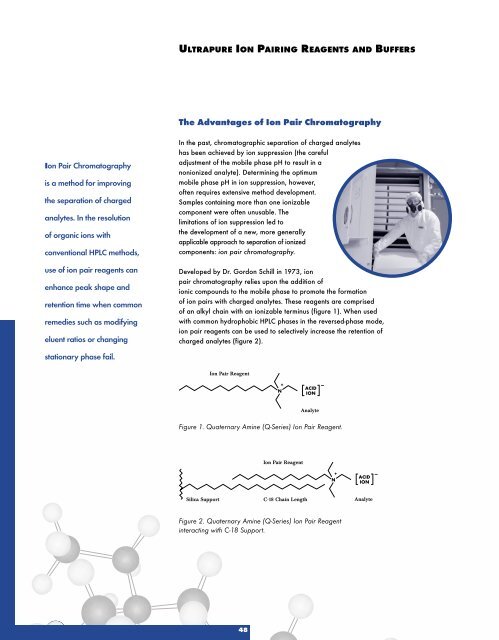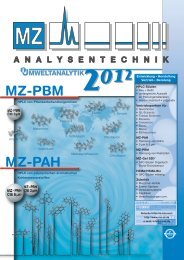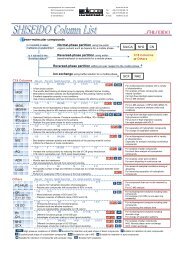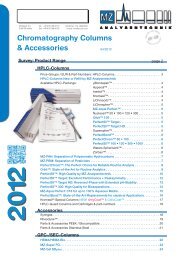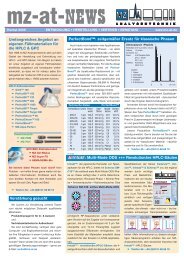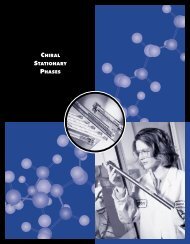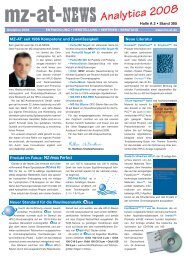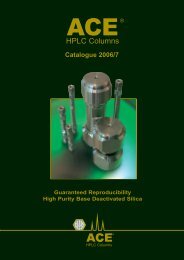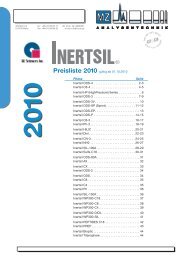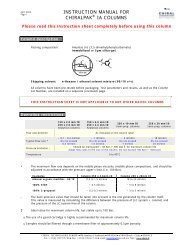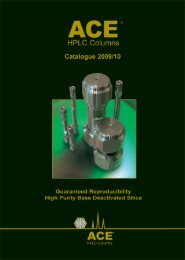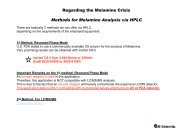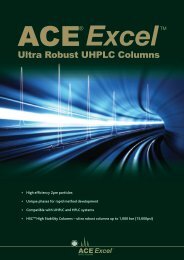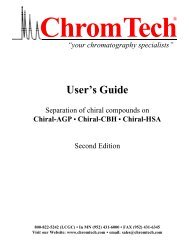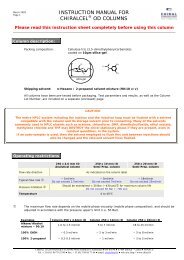Create successful ePaper yourself
Turn your PDF publications into a flip-book with our unique Google optimized e-Paper software.
Ion Pair Chromatography<br />
is a method for improving<br />
the separation of charged<br />
analytes. In the resolution<br />
of organic ions with<br />
conventional <strong>HPLC</strong> methods,<br />
use of ion pair reagents can<br />
enhance peak shape and<br />
retention time when common<br />
remedies such as modifying<br />
eluent ratios or changing<br />
stationary phase fail.<br />
ULTRAPURE ION PAIRING REAGENTS AND BUFFERS<br />
The Advantages of Ion Pair Chromatography<br />
In the past, chromatographic separation of charged analytes<br />
has been achieved by ion suppression (the careful<br />
adjustment of the mobile phase pH to result in a<br />
nonionized analyte). Determining the optimum<br />
mobile phase pH in ion suppression, however,<br />
often requires extensive method development.<br />
Samples containing more than one ionizable<br />
component were often unusable. The<br />
limitations of ion suppression led to<br />
the development of a new, more generally<br />
applicable approach to separation of ionized<br />
components: ion pair chromatography.<br />
Developed by Dr. Gordon Schill in 1973, ion<br />
pair chromatography relies upon the addition of<br />
ionic compounds to the mobile phase to promote the formation<br />
of ion pairs with charged analytes. These reagents are comprised<br />
of an alkyl chain with an ionizable terminus (figure 1). When used<br />
with common hydrophobic <strong>HPLC</strong> phases in the reversed-phase mode,<br />
ion pair reagents can be used to selectively increase the retention of<br />
charged analytes (figure 2).<br />
Ion Pair Reagent<br />
Silica Support C-18 Chain Length<br />
48<br />
+<br />
N<br />
Ion Pair Reagent<br />
ACID<br />
ION<br />
Analyte<br />
Figure 1. Quaternary Amine (Q-Series) Ion Pair Reagent.<br />
Figure 2. Quaternary Amine (Q-Series) Ion Pair Reagent<br />
interacting with C-18 Support.<br />
_<br />
+<br />
N<br />
ACID<br />
ION<br />
Analyte<br />
_


